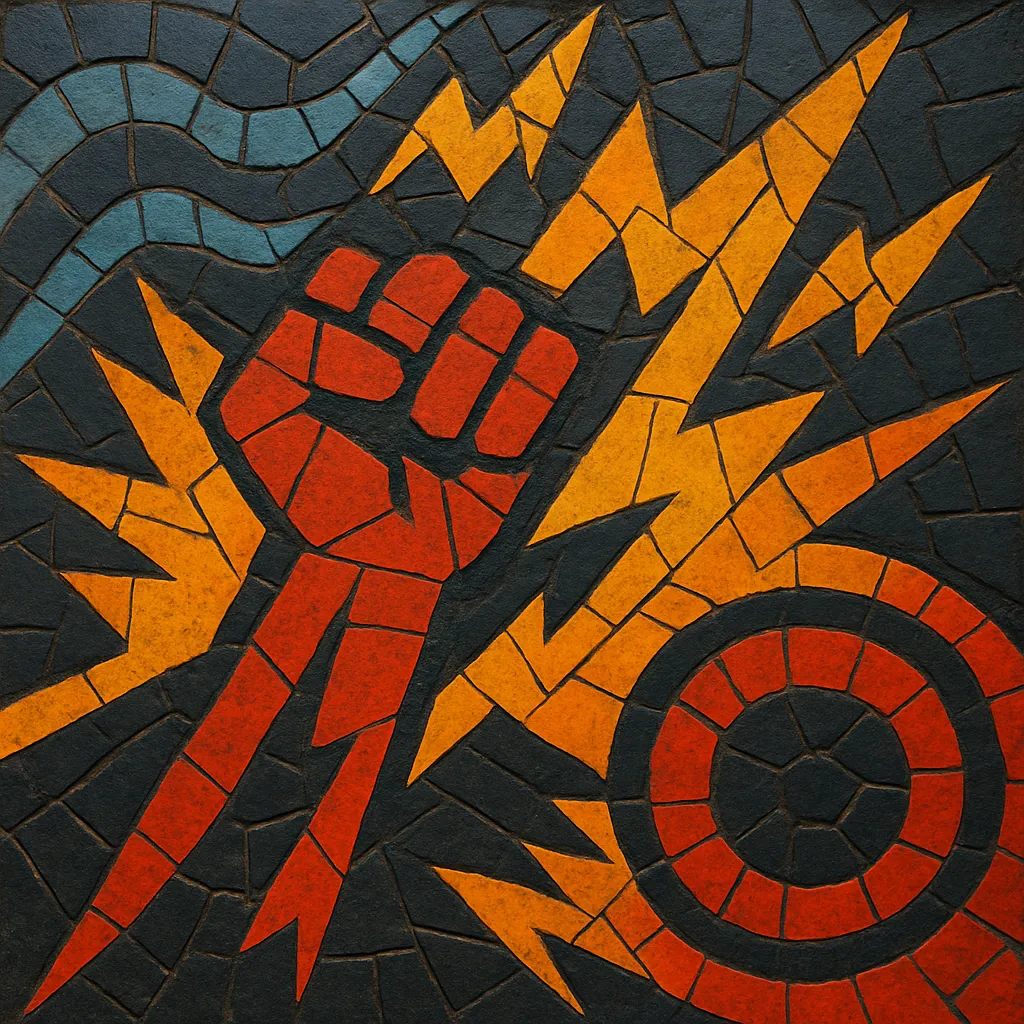Powerstomp is a high-energy offshoot of UK Hardcore that emphasizes a heavy, stomping 4/4 kick, euphoric melodies, and festival-sized drops.
It typically runs around 165–175 BPM, replacing the rolling breakbeats of older happy hardcore with hardstyle/gabber-weighted kicks, reverse-bass grooves, and bouncy offbeat basslines.
Bright supersaw leads, hands-in-the-air breakdowns, chopped vocals, and simple, chantable riffs make it highly dancefloor-focused and immediately impactful.
Powerstomp emerged in the United Kingdom as a tougher, stomp-oriented strain of UK Hardcore. Producers began folding in hardstyle/gabber kick design and reverse-bass patterns while keeping the euphoric, melodic DNA of happy hardcore. The goal was a sound that hit harder on big systems without abandoning the anthemic spirit of the scene.
By the mid‑2010s, UK hardcore raves and compilations frequently featured tracks dubbed “powerstomp,” highlighting a formula of supersaw leads, breakdowns with emotional chord progressions, and stompy 4/4 drops. Labels and club brands associated with the harder edge of UK Hardcore championed the style, helping it spread beyond the UK and into Europe and Japan.
Japanese hardcore and J-core circles embraced the sound’s energetic kick/bass architecture and festival‑ready hooks, trading influences with UK producers. Powerstomp also cross‑pollinated with donk/bounce aesthetics (donk stabs, cheeky vocal chops) and hardstyle’s sound design, while remaining rooted in UK Hardcore tempo and melody.
Powerstomp remains a crowd-pleasing, DJ-friendly toolset inside modern UK Hardcore sets—valued for its immediate impact, sing‑along melodies, and straightforward, stompy drops—while continuing to inform harder and more festival‑leaning interpretations of the UK Hardcore sound.


